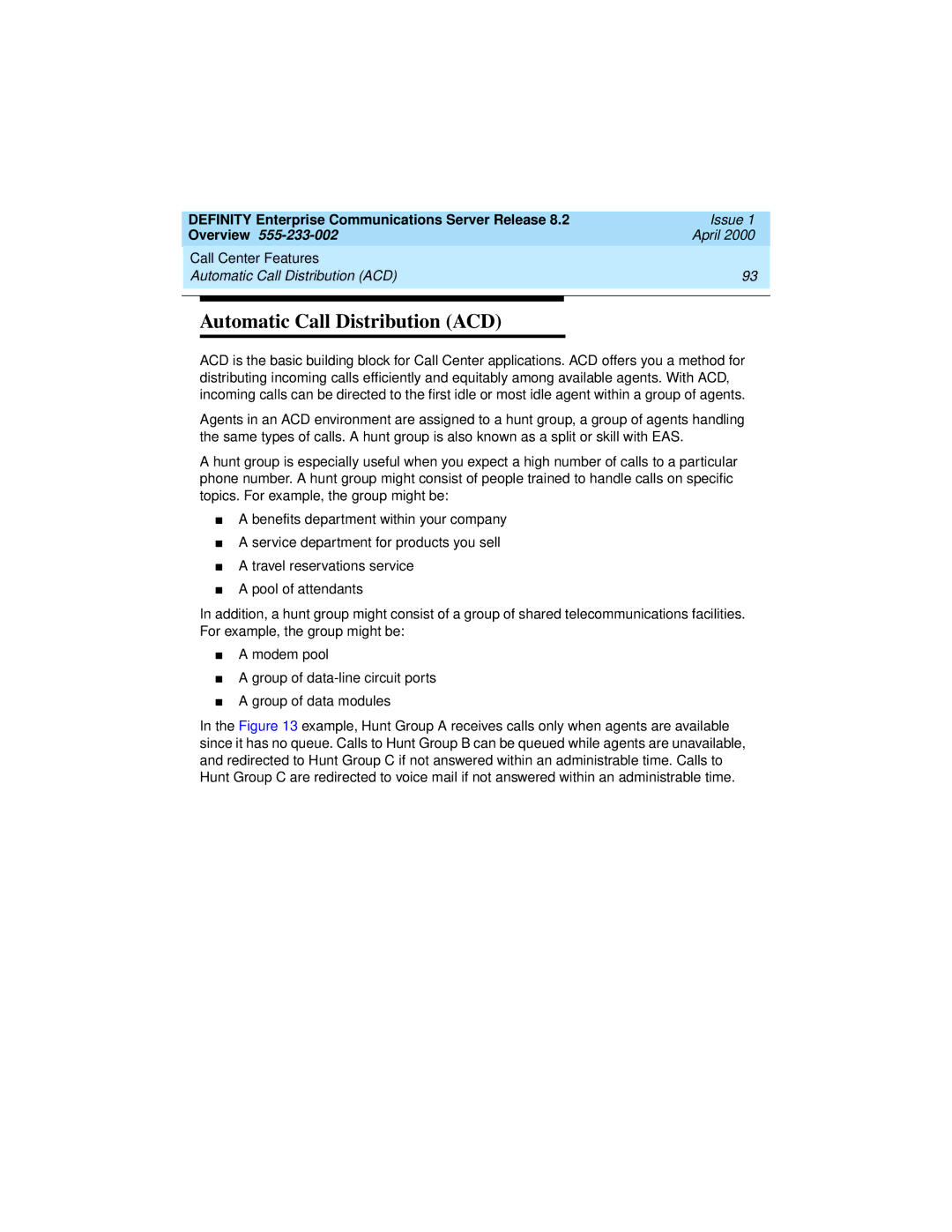| DEFINITY Enterprise Communications Server Release 8.2 | Issue 1 | ||
| Overview | April 2000 | ||
| Call Center Features |
| ||
| Automatic Call Distribution (ACD) | 93 | ||
|
|
|
|
|
|
|
|
|
|
Automatic Call Distribution (ACD)
ACD is the basic building block for Call Center applications. ACD offers you a method for distributing incoming calls efficiently and equitably among available agents. With ACD, incoming calls can be directed to the first idle or most idle agent within a group of agents.
Agents in an ACD environment are assigned to a hunt group, a group of agents handling the same types of calls. A hunt group is also known as a split or skill with EAS.
A hunt group is especially useful when you expect a high number of calls to a particular phone number. A hunt group might consist of people trained to handle calls on specific topics. For example, the group might be:
■A benefits department within your company
■A service department for products you sell
■A travel reservations service
■A pool of attendants
In addition, a hunt group might consist of a group of shared telecommunications facilities. For example, the group might be:
■A modem pool
■A group of
■A group of data modules
In the Figure 13 example, Hunt Group A receives calls only when agents are available since it has no queue. Calls to Hunt Group B can be queued while agents are unavailable, and redirected to Hunt Group C if not answered within an administrable time. Calls to Hunt Group C are redirected to voice mail if not answered within an administrable time.
